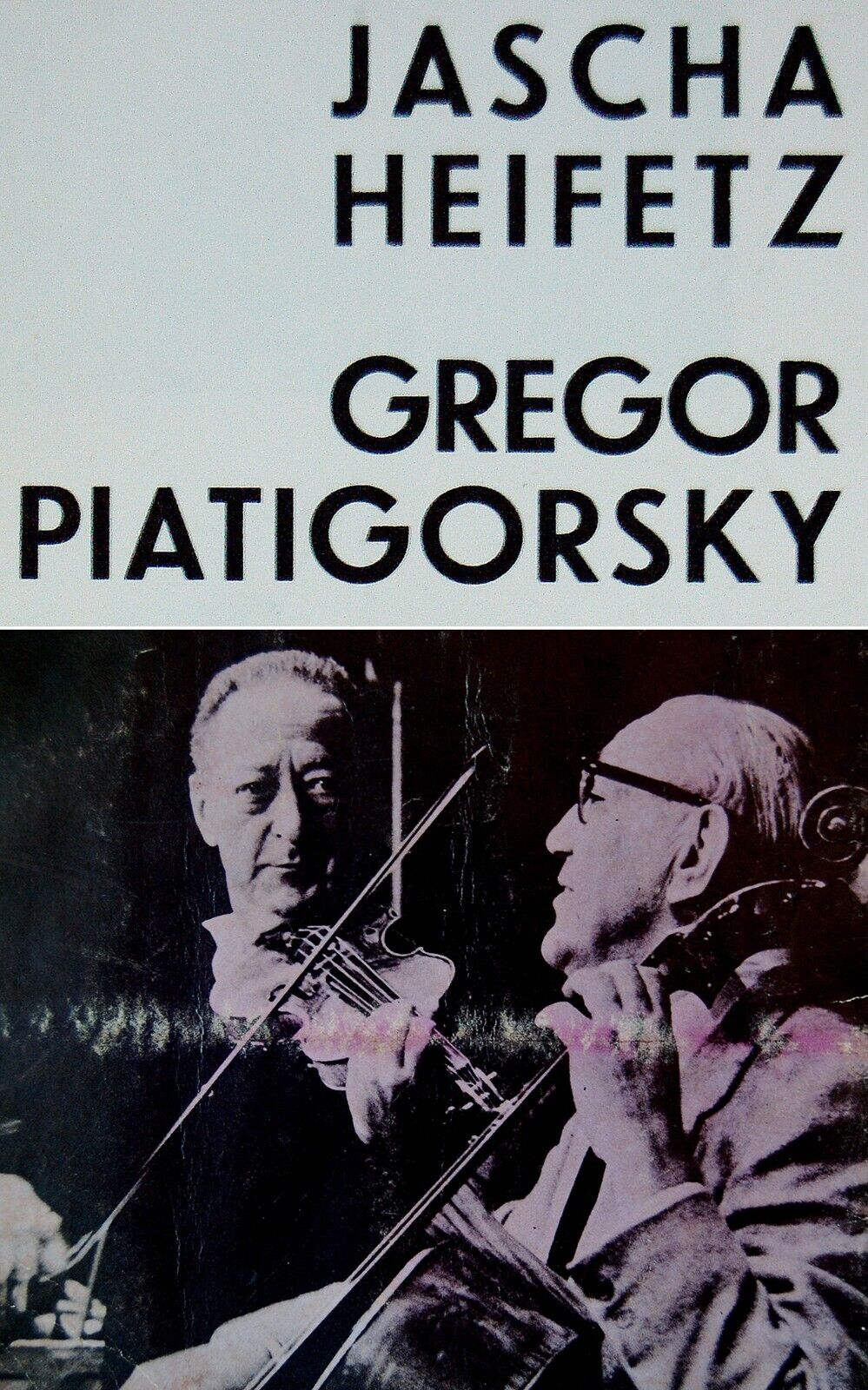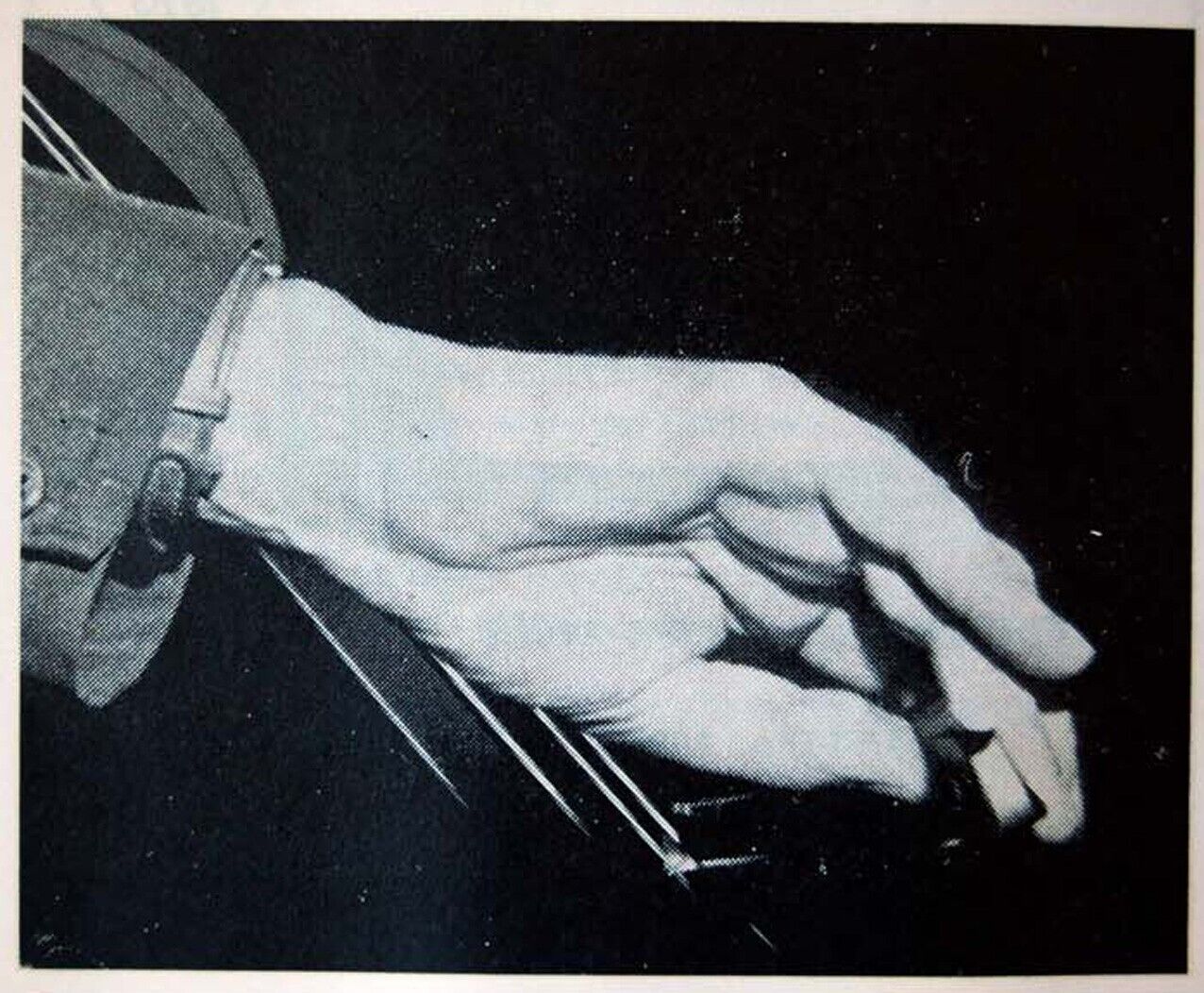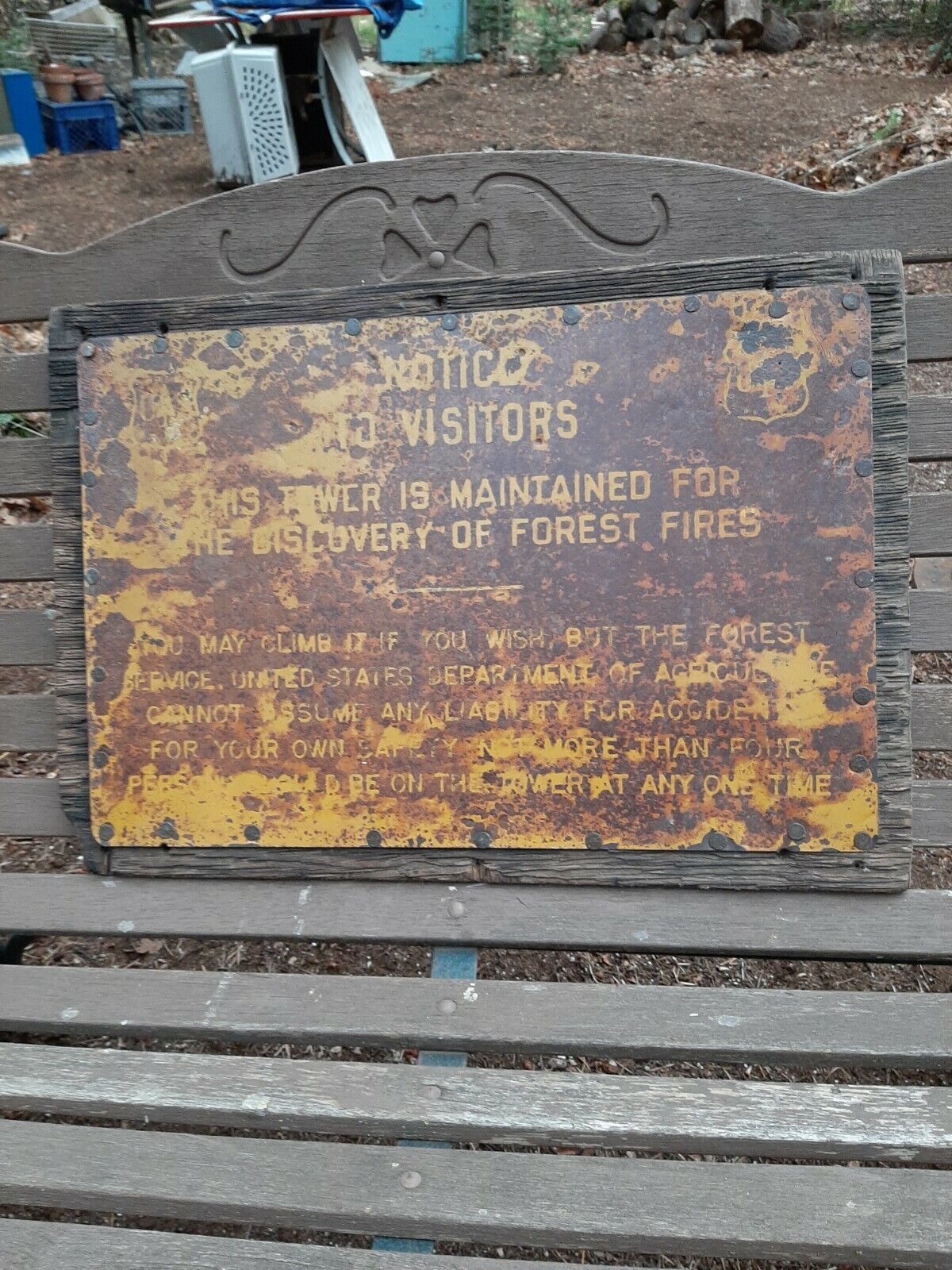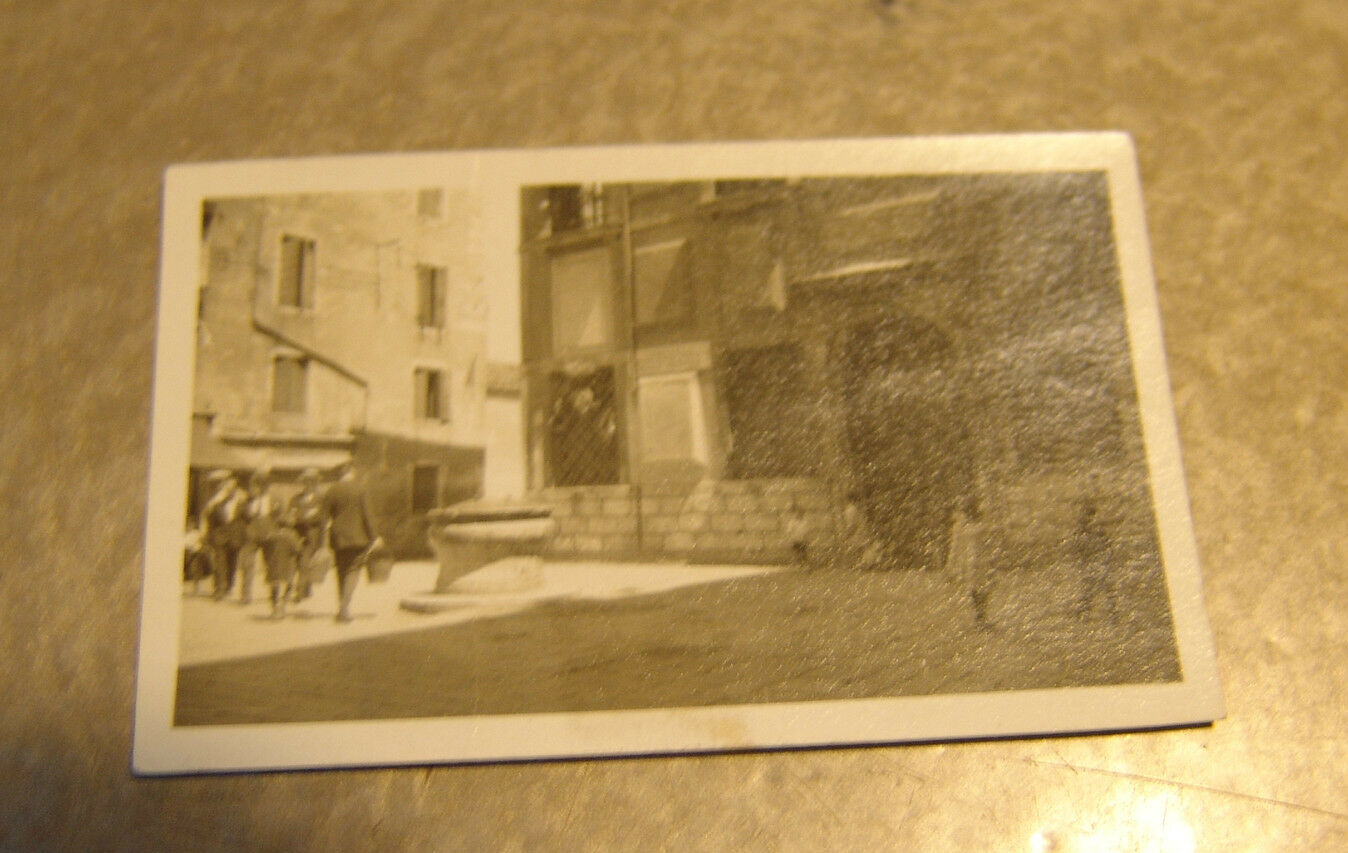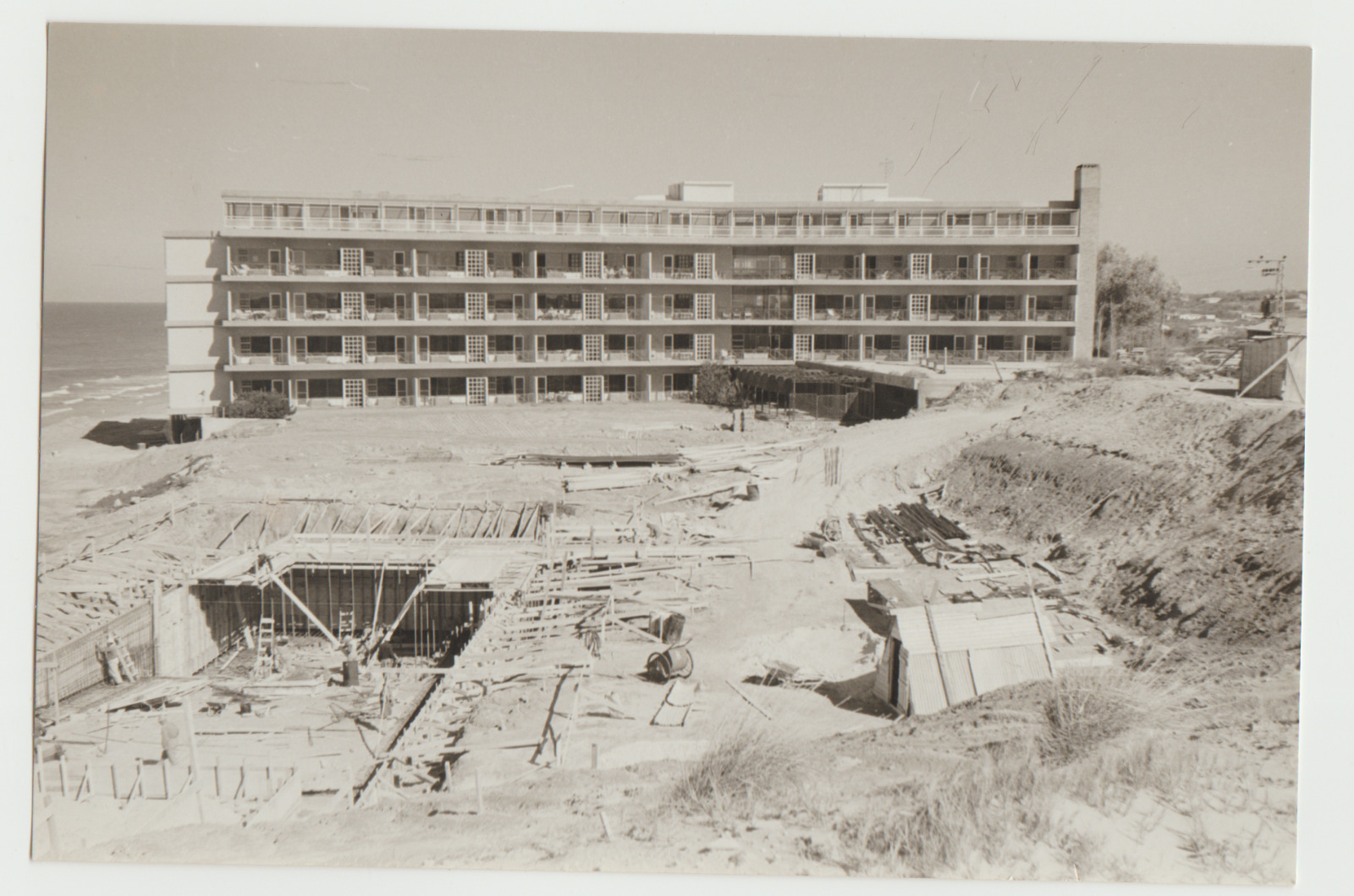-40%
HEIFETZ & PIATIGORSKY Joint RECITAL Israel PHOTO PROGRAM Jewish VIOLIN & CELLO
$ 92.4
- Description
- Size Guide
Description
DESCRIPTION:
Here for sale is an ULTRA RARE exceptional PHOTOGRAPHED PROGRAM of a genuine SUMMIT MEETING of 2 of the world greatest musicians , A FESTIVE RECITAL of the two strings giants - The renowned JEWISH VIOLINIST Jascha HEIFETZ With the CELLIST Gregor PIATIGORSKY . The VIOLIN + CELLO RECITAL – FESTIVE CONCERT took place in 1970 in ISRAEL. HEIFETZ together with PIATIGORSKY played pieces by KODALY , STRAVINSKY and BRAHMS. Photographed covers. Quite a few PHOTOS. Hebrew & English. Around 6 x 12 " . 24 unpaged chromo pp excluding the covers . Hebrew & English. Very good pre owned condition . ( Pls look at scan for accurate AS IS images ) Will be sent inside a protective rigid sealed tube .
PAYMENTS
: Payment method accepted : Paypal
& All credit cards
.
SHIPPMENT
:SHIPP worldwide via registered airmail is $ 29 . Will be sent inside a protective packaging
.
Will be sent around 5-10 days after payment .
Heifetz, Jascha (Iossif Robertovich), great Russian-born American violinist; b. Vilnius, Feb. 2, 1899; d. Los Angeles, Dec. 10, 1987. His father, Ruben Heifetz, an able musician, taught him the rudiments of violin playing at a very early age; he then studied with Ilya Malkin at the Vilnius Music School, and played in public before he was 5 years old; at the age of 6, he played Mendelssohn's Concerto in Kovno. In 1910 he was taken by his father to St. Petersburg, and entered the Conservatory there in the class of Nalbandian; after a few months, he was accepted as a pupil by Leopold Auer. He gave his first public concert in St. Petersburg on April 30, 1911. The following year, with a letter of recommendation from Auer, he went to Berlin; his first concert there (May 24, 1912), in the large hall of the Hochschule für Musik, attracted great attention: Artur Nikisch engaged him to play the Tchaikovsky Concerto with the Berlin Philharmonic (Oct. 28, 1912), but his appearance proved uneventful. He then decided to continue his studies with Auer in St. Petersburg and in Germany. While visiting Auer in Norway in 1916, he played in a joint concert with Toscha Seidel before the king and queen of Norway. After the Russian Revolution of 1917, he went to America, by way of Siberia and the Orient. His debut at Carnegie Hall in N.Y. (Oct. 27, 1917) won for him the highest expression of enthusiasm from the public and in the press. Mischa Elman, the prime violinist of an older generation, attended the concert in the company of the pianist Leopold Godowsky. When Elman complained that it was too hot in the hall, Godowsky retorted, "Not for pianists." Veritable triumphs followed during Heifetz's tour of the U.S., and soon his fame spread all over the world. He made his first London appearance on May 5, 1920; toured Australia (1921), the Orient (1923), Palestine (1926), and South America. He revisited Russia in 1934, and was welcomed enthusiastically. He became a naturalized American citizen in 1925, and made his home in Beverly Hills, Calif. Heifetz made regular tours throughout the world, appearing not only with the foremost orchestras but as a recitalist. As a chamber music artist, he played in trios with Rubinstein and Feuermann, and later with Pennario and Piatigorsky. He taught classes of exceptionally talented pupils at the University of Southern Calif. in Los Angeles (1962-72). In 1974 he made his last public appearance and thereby brought to a close one of the most extraordinary violin careers in history. The Olympian quality of Heifetz's playing was unique in luminous transparency of texture, tonal perfection, and formal equilibrium of phrasing; he never allowed his artistic temperament to superimpose extraneous elements on the music; this inspired tranquillity led some critics to characterize his interpretations as impersonal and detached. Heifetz made numerous arrangements for violin of works by Bach, Vivaldi, and contemporary composers; his most famous transcription is "Hora Staccato" by Grigoraş Dinicu, made into a virtuoso piece by adroit ornamentation and rhythmic elaboration. In his desire to promote modern music, he commissioned a number of composers (Walton, Gruenberg, Castelnuovo-Tedesco, and others) to write violin concertos for him and performed several of them.
More than a century after his public debut, the name Jascha Heifetz continues to evoke awe and excitement among fellow musicians. In a performing career that spanned 65 years, he established an unparalleled standard of violin playing to which violinists around the world still aspire. The day after the 19-year-old Heifetz’s London debut, George Bernard Shaw wrote him a now legendary letter. “If you provoke a jealous God by playing with such superhuman perfection,” Shaw warned, “you will die young. I earnestly advise you to play something badly every night before going to bed, instead of saying your prayers. No mortal should presume to play so faultlessly.” Heifetz is widely considered to be one of the most profoundly influential performing artists of all time. Born in Vilnius, Lithuania — then occupied by Russia — on February 2, 1901, he became a U.S. citizen in 1925. Fiercely patriotic to his adopted country, he gave hundreds of concerts for Allied service men and women during World War II, including tours of Central and South America, North Africa, Italy, France, and Germany, often playing from the back of a flatbed truck in dangerous conditions. In 1928, he published the first of dozens of acclaimed violin transcriptions. Many, including his arrangements of selections from Gershwin’s “Porgy and Bess,” are now part of the standard repertoire. Using the pseudonym Jim Hoyl, he even wrote a pop song that became a hit in 1946. In his later years, Heifetz became a dedicated teacher and a champion of causes he believed in. He led efforts to establish “911” as an emergency phone number, and crusaded for clean air. He and his students at the University of Southern California protested smog by wearing gas masks, and in 1967 he converted his Renault passenger car into an electric vehicle. As a result of his vast recorded legacy, Heifetz’s violin playing is no less influential today than it was in his lifetime. To legions of violinists he remains, quite simply, “The King.” **** Gregor Piatigorsky (Russian: Григо́рий Па́влович Пятиго́рский, Grigoriy Pavlovich Pyatigorskiy; April 17 [O.S. April 4] 1903 – August 6, 1976) was a Russian Empire-born American cellist.Contents1Biography1.1Early life1.2United States2Appraisal3Works4Partial discography5Chess6References7Further reading8External linksBiography[edit]Early life[edit]Gregor Piatigorsky was born in Ekaterinoslav (now Dnipro, Ukraine) into a Jewish family. As a child, he was taught violin and piano by his father. After seeing and hearing the cello, he was determined to become a cellist and was given his first cello when he was seven.Piatigorsky won a scholarship to the Moscow Conservatory, studying with Alfred von Glehn, Anatoliy Brandukov, and a certain Gubariov. At the same time, he was earning money for his family by playing in local cafés.Piatigorsky was 13 when the Russian Revolution took place. Shortly afterwards, he started playing in the Lenin Quartet. At 15, he was hired as the principal cellist for the Bolshoi Theater.The Soviet authorities, specifically Anatoly Lunacharsky, would not allow Piatigorsky to travel abroad to further his studies, so he smuggled himself and his cello into Poland on a cattle train with a group of artists. One of the women was a heavy-set soprano who, when the border guards started shooting at them, grabbed Piatigorsky and his cello. The cello did not survive intact, but it was the only casualty.Now 18, Piatigorsky studied briefly in Berlin and Leipzig, with Hugo Becker and Julius Klengel, playing in a trio in a Russian café to earn money for food. Among the patrons of the café were Emanuel Feuermann and Wilhelm Furtwängler. Furtwängler heard Piatigorsky and hired him as the principal cellist of the Berlin Philharmonic.United States[edit]In 1929, Piatigorsky first visited the United States, playing with the Philadelphia Orchestra under Leopold Stokowski and the New York Philharmonic under Willem Mengelberg. In Ann Arbor, Michigan, in January 1937 he married Jacqueline de Rothschild, daughter of Édouard Alphonse James de Rothschild of the wealthy Rothschild banking family of France. That fall, after returning to France, they had their first child, daughter Jephta. Following the Nazi occupation in World War II, the family fled the country back to the States and settled in Elizabethtown in the Adirondack Mountains, New York. Their son, Joram, was born in Elizabethtown in 1940.From 1941 to 1949, Piatigorsky was head of the cello department at the Curtis Institute of Music in Philadelphia, and he also taught at Tanglewood, Boston University, and the University of Southern California, the last of which he remained associated with until his death. USC established the Piatigorsky Chair of Violoncello in 1974 to honor Piatigorsky.Piatigorsky participated in a chamber group with Arthur Rubinstein (piano), William Primrose (viola) and Jascha Heifetz (violin). Referred to in some circles as the "Million Dollar Trio", Rubinstein, Heifetz, and Piatigorsky made several recordings for RCA Victor.[1][2]Piatigorsky played chamber music privately with Heifetz, Vladimir Horowitz, Leonard Pennario, and Nathan Milstein.[1][3] Piatigorsky also performed at Carnegie Hall with Horowitz and Milstein in the 1930s.[4]In 1965, his popular autobiography Cellist was published.Gregor Piatigorsky died of lung cancer at his home in Los Angeles, California, in 1976. He was interred in the Westwood Village Memorial Park Cemetery in Los Angeles.InstrumentHe owned two Stradivarius cellos, the "Batta" and the "Baudiot". From 1939 to 1951 Piatigorsky also owned the famous 1739 Domenico Montagnana cello known as the "Sleeping Beauty".Appraisal[edit]External audio You may hear Gregor Piatigorsky performing Antonin Dvorak's Concerto For Cello and Orchestra in B minor Op. 104 with Eugene Ormandy conducting the Philadelphia Orchestra in 1946 Here on archive.orgIt has been reported that the great violin pedagogue Ivan Galamian once described Piatigorsky as the greatest string player of all time. He was an extraordinarily dramatic player. His orientation as a performer was to convey the maximum expression embodied in a piece. He brought a great authenticity to his understanding of this expression. He was able to communicate this authenticity because he had had extensive personal and professional contact with many of the great composers of the day.Many of those composers wrote pieces for him, including Sergei Prokofiev (Cello Concerto[5]), Paul Hindemith (Cello Concerto), Mario Castelnuovo-Tedesco (Cello Concerto[6]), William Walton (Cello Concerto), Vernon Duke (Cello Concerto), and Igor Stravinsky (Piatigorsky and Stravinsky collaborated on the arrangement of Stravinsky's "Suite Italienne", which was extracted from Pulcinella, for cello and piano; Stravinsky demonstrated an extraordinary method of calculating fifty-fifty royalties[7]). At a rehearsal of Richard Strauss's Don Quixote, which Piatigorsky performed with the composer conducting, after the dramatic slow variation in D minor, Strauss announced to the orchestra, "Now I've heard my Don Quixote as I imagined him."Piatigorsky had a magnificent sound[weasel words] characterized by a distinctive fast and intense vibrato and he was able to execute with consummate articulation all manner of extremely difficult bowings, including a downbow staccato of which other string players could not help but be in awe. He often attributed his penchant for drama to his student days when he accepted an engagement playing during the intermissions in recitals by the great Russian basso, Feodor Chaliapin. Chaliapin, when portraying his dramatic roles, such as the title role in Boris Godunov, would not only sing, but declaim, almost shouting. On encountering him one day, the young Piatigorsky told him, "You talk too much and don't sing enough." Chaliapin responded, "You sing too much and don't talk enough." Piatigorsky thought about this and from that point on, tried to incorporate the kind of drama and expression he heard in Chaliapin's singing into his own artistic expression.Works[edit]Piatigorsky was also a composer. His Variations on a Paganini Theme (based on Caprice No. 24) was composed in 1946 for cello and orchestra and was orchestrated by his longtime accompanist Ralph Berkowitz; it was later transcribed for cello and piano.[8] Each of the fifteen variations whimsically portrays one of Piatigorsky's musician colleagues. Denis Brott, a student of Piatigorsky, identified them as: Casals, Hindemith, Garbousova, Morini, Salmond, Szigeti, Menuhin, Milstein, Kreisler, a self-portrait of Piatigorsky himself, Cassadó, Elman, Bolognini, Heifetz, and Horowitz.[9]Partial discography[edit]Heifetz, Primrose & Piatigorsky (RCA Victor LP LSC-2563) RCA Victor Red Seal 1961Heifetz & Piatigorsky (Stereo LP LSC-3009) RCA Victor Red Seal 1968The Heifetz Piatigorsky Concerts (21-CD boxed set, original album collection) Sony-RCA 88725451452, 2013Chess[edit]Piatigorsky also enjoyed playing chess. His wife, Jacqueline Piatigorsky, was a strong player who played in several US women's championships and represented the United States in the women's Chess Olympiad. In 1963, the Piatigorskys organized and financed a strong international tournament in Los Angeles, won by Paul Keres and Tigran Petrosian. A second Piatigorsky Cup was held in Santa Monica in 1966, and was won by Boris Spassky. ******* Gregor PiatigorskyNow, in the 21st century, the great Russian patriarch of cellists is Mstislav Rostropovich. However, 25 years ago, it was Piatigorsky who held that honored position. Piatigorsky was born in Ekaterinoslav (Dnetropetrovosk) Russia on April 17, 1903. He studied violin and piano as a young child with his father, until he saw and heard the cello at an orchestra concert, and became determined to be a cellist. He constructed a "play cello" of two sticks, a long stick for the cello, and a short stick for the bow, and enjoyed pretending to perform. When he was seven years old he was finally given a real cello, and began his remarkable life as a cellist.A student of Klengel told him he had no talent whatsoever, and to stay clear of the cello. Piatigorsky ignored the unwanted advice, and won a scholarship to the Moscow Conservatory, where he studied with Gubariov, von Glehn (who had studied with Davidov) and Brandoukov. While studying at the conservatory he earned money for his family by playing in local cafes.The October Russian Revolution occured with he was only 13 years old, and he began playing in a string quartet shortly thereafter, appropriately named the "Lenin Quartet." At the age of 15 he was engaged to be the principal cellist of the Bolshoi Theater in Moscow.Despite his success as a cellist, or maybe because of it, the Russian authorities would not allow him to travel abroad to further his studies, or to perform. He therefore defected into Poland by taking a cattle train to the frontier, and then fleeing across the border with his cello. Unfortunately his cello didn't make the crossing intact. Border guards were shooting at him and his companions, one of which happend to be a large lady opera singer. When the shots rang out, she grabbed Piatigorsky, crushing his cello. Neither Piatigorsky or the soprano were injured, as he helped her across the border.Piatigorsky, now 18 years old, traveled from Poland to Germany, and studied for a short time in Berlin and in Leipzig with Becker and Klengel, neither of which were much appreciated by him. He found employment playing in a trio in a Russian cafe in Berlin, frequented by the likes of Feuermann and Furtwangler, who heard him play and hired him as principal cellist of the Berlin Philharmonic. He kept that post until 1929 (now 26 years old), when he decided to persue a career as a traveling concert artist. When Richard Strauss heard him perform Don Quixote with the Berlin Philharmonic, he said, "I have finally heard my Don Quixote as I thought him to be." That same year he made his debuts with the Philadelphia Orchestra under Stowkowski, and the New York Philharmonic, with Mengelberg. (He loved the United States, and became a citizen in 1942.)He formed a chamber group with pianist Artur Rubinstein, violist William Primrose and violinist Jascha Heifetz. The group became very famous and recorded at least 30 long playing records. Privately he enjoyed playing chamber music with Horowitz and Milstein.Both the concert going crowds, and composers loved him, and many works were written especially for him, even as we now see in the case of Rostropovich. Both Piatigorsky and Rostropovich have a relationship with Prokofiev's Symphony Concerto Opus 125. Prokofiev had written a Ballade in 1938, for Piatigorsky, which he premiered with the Boston Symphony under the baton of Koussevitsky. Prokofiev later reworked his material into the Symphony Concerto, which he dedicated to Rostropovich. Piatigorsky collaborated with Stravinsky on a transcription of the Pulchinella Suite, which became known as the "Suite Italienne" for cello and piano.He became an influential teacher. From 1941 to 1949 Piatigorsky was head of the cello department at the Curtis Institute in Philadelphia, and taught chamber music at Tanglewood. The years 1957 to 1962 saw Piatigorsky heading up the cello department at Boston University, and then in 1962 continuing his teaching at the University of Southern California, where he remained until his death in 1976. In 1962 and also in 1966 he was a member of the jury of the International Tchaikovsky Competition in Moscow. It was also in 1962 that the Cello Society of New York honored him by beginning the "Piatigorsky Prize," awarded every other year to a deserving young artist.Piatigorsky owned two Stradivarius cellos: the "Batta" dated 1714, and the "Baudiot" dated 1725. He died August 6, 1976 from cancer, and was buried in Brentwood Cemetary, near Los Angeles. ***** Gregor Piatigorsky (1903–1976)Gregor Piatigorsky was born on April 17, 1903 in Ekaterinoslav, Ukraine. He began the cello at the age of 7, and shortly thereafter supported his entire family by playing in cafés, brothels and silent movie houses. Two years later, Piatigorsky left home and made his way to the Moscow Conservatory of Music. By the age of fifteen he was both principal cellist of the Bolshoi Opera Orchestra and a member of the famed “Beethoven String Quartet”, later renamed the “Lenin String Quartet.”In 1921, unhappy with the oppressive political climate in Russia, Piatigorsky escaped into Poland. There are many wonderfully colorful accounts of this border crossing. The stories usually describe him swimming the Zbruch River with cello held high amidst gunfire emanating from both sides. One of these accounts can be read in Piatigorsky’s autobiography, Cellist. The countless variations on this escape can be attributed in part to his incredible story-telling ability. Piatigorsky was well known as a raconteur of unparalleled imagination, wit and charm. He briefly served as principal cellist of the Warsaw Symphony and then made his way to Leipzig to join the class of famed cellist and pedagogue, Julius Klengel. Following his studies in Leipzig, Piatigorsky moved to Berlin to seek employment. While in Berlin he had the opportunity to premier Arnold Schönberg’s “Pierrot Lunaire” with pianist Artur Schnabel, violist/violinist Boris Kroyt, conductor Fritz Stiedry and flautist Paul Bose. This premier led to an audition with conductor Wilhelm Furtwängler and the appointment as principal cellist of the Berlin Philharmonic. Throughout this period of orchestral playing Piatigorsky continued to perform often as soloist, recitalist and chamber musician. He played with violinist Carl Flesch and Artur Schnabel in the first of three famous trios with which he was to be associated. Later he toured with violinist Nathan Milstein and pianist Vladimir Horowitz and finally, in the latter part of his career, with Jascha Heifetz and Artur Rubenstein.After a few years with the Berlin Philharmonic, Piatigorsky embarked on what was to become a legendary solo career. He traveled throughout the world with his cello demonstrating its extraordinary qualities to people everywhere, from the largest cities to the smallest towns. When Piatigorsky first chose the cello in 1910 it was not considered a viable solo instrument. Very few people played the cello with competence or beauty. Cellists were rarely employed as soloists with symphony orchestras and almost never performed recitals. Audiences couldn’t imagine listening to the cello for an entire evening! He developed and expanded the technique of the cello making it as facile and expressive as the violin. Piatigorsky also transcribed, arranged, composed and commissioned countless works for the cello thereby increasing its repertoire. His mission was to show the beauty and nobility of the cello’s voice the world over. It is a testament to Gregor Piatigorsky’s career that perhaps the most famous classical instrumentalist today is a cellist, Yo-Yo Ma. Once, while describing his concerts, Piatigorsky said that the “bread and butter” of his career was the “Tuesday Morning Music Club”. By this, he meant that the many of his concerts were local community events. Of course, he performed with all of the worlds’ greatest orchestras and in all of the finest concert halls. In the first half of the twentieth century musicians did not fly from one major city to another. It was common to travel by train. Artists played in every town along the route of the train. Great live classical music was truly a part of the landscape. Today, quite frequently a Piatigorsky Foundation artist performing in a library, town hall or high school auditorium in rural America is told by someone from the audience, “I heard Gregor Piatigorsky perform on this very stage 50 years ago!”In January 1937, “Grisha” (as he was known to his friends) married Jacqueline de Rothschild in Ann Arbor, Michigan. That fall, after returning to France, they had their first child, Jephta. While on tour in the United States in 1939, Piatigorsky happened upon a beautiful property in the Adirondacks being auctioned off by the bank. He put in an extremely low bid and remarkably became the owner of a house in Elizabethtown, New York. A few months later war broke out in Europe. Piatigorsky, his wife and baby daughter, were on the last ship to leave France, just escaping Hitler’s invasion. They took refuge in Elizabethtown where their son, Joram, was born a year later. When Piatigorsky was appointed to the faculty of the Curtis Institute of Music, the family moved to Philadelphia. In 1949, he relocated once again to Los Angeles, first teaching at UCLA and later in 1962 joining violinist Jascha Heifetz on the faculty of the University of Southern California where he spent much of his time teaching and performing chamber music.After a unique and remarkable career, Gregor Piatigorsky died at his home in California on August 6, 1976 of lung cancer. His warmth, generosity of spirit and larger than life personality remain in the hearts and minds of all who knew him. ebay1377 folder 28
